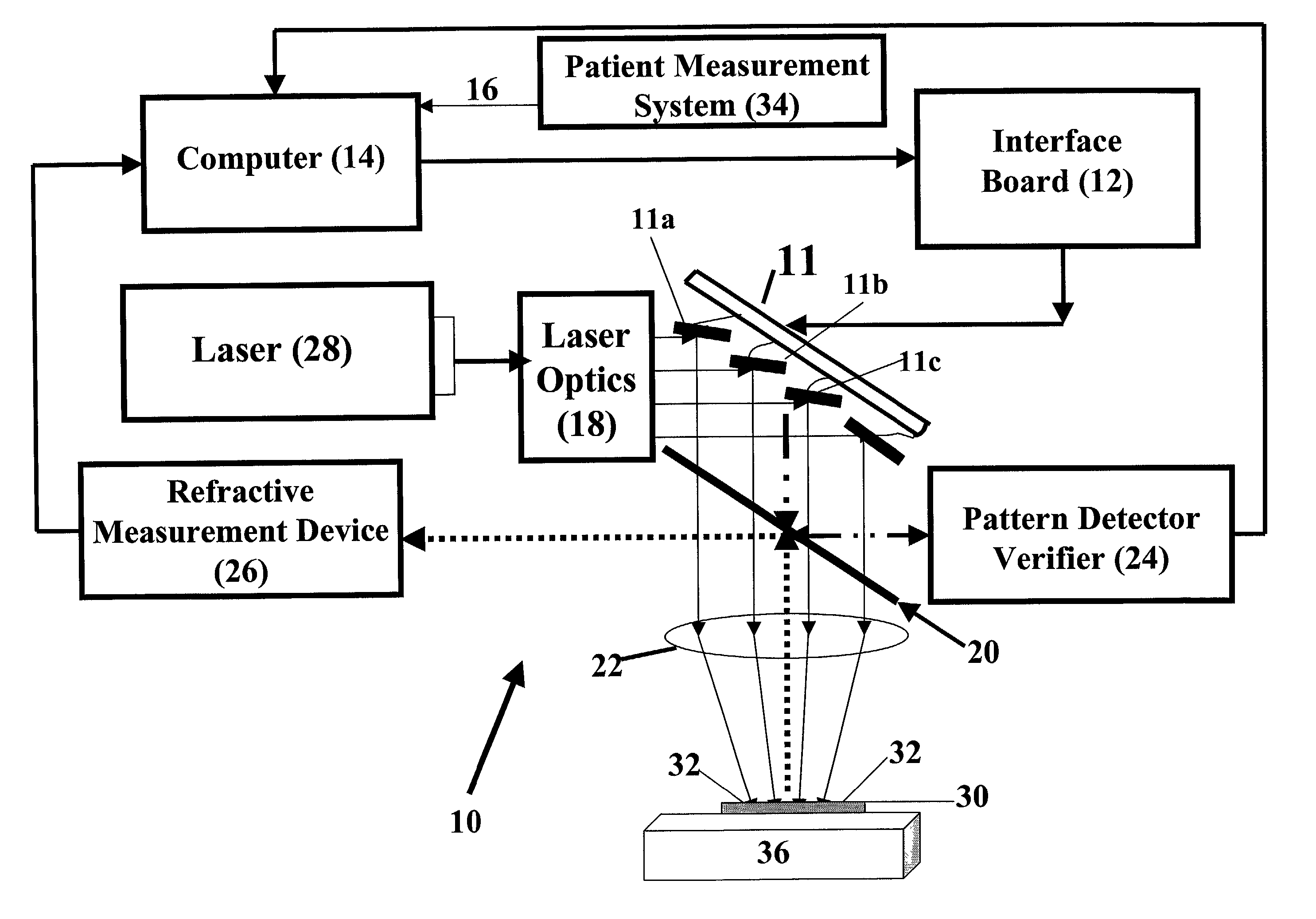Laser method for shaping of optical lenses
a laser method and optical lens technology, applied in the field of laser method, can solve the problems of not meeting the individual needs of a given patient, not being able to achieve optimal visual acuity, and custom ground lenses are prohibitively expensive for most patients
- Summary
- Abstract
- Description
- Claims
- Application Information
AI Technical Summary
Problems solved by technology
Method used
Image
Examples
Embodiment Construction
[0030] During the course of this description like numbers will be used to identify like elements according to the different views that illustrate the invention.
[0031] FIG. 1 shows a schematic diagram of a laser beam apparatus of use in a preferred embodiment of the method of the present invention. The apparatus includes a laser beam modifying system 11, an interface board 12, a computer 14, a computer input 16, laser optics 18, beam splitter 20, re-imaging optics 22, pattern detector and verifier 24, refractive measurement device 26, a laser 28, a index marks 34, a patient measurement system 34, and an XY table 36.
[0032] In the preferred embodiment of this invention, the laser modifying system 11 is a thin-film micromirror array as illustrated in FIG. 1. Thin-film micromirror 11 has a plurality of individual micromirrors 11a,b,c . . . , each of which can be individually tilted with respect to incident laser beamlets. In actual practice, a laser beam emanating from laser 28 is split ...
PUM
 Login to View More
Login to View More Abstract
Description
Claims
Application Information
 Login to View More
Login to View More - R&D
- Intellectual Property
- Life Sciences
- Materials
- Tech Scout
- Unparalleled Data Quality
- Higher Quality Content
- 60% Fewer Hallucinations
Browse by: Latest US Patents, China's latest patents, Technical Efficacy Thesaurus, Application Domain, Technology Topic, Popular Technical Reports.
© 2025 PatSnap. All rights reserved.Legal|Privacy policy|Modern Slavery Act Transparency Statement|Sitemap|About US| Contact US: help@patsnap.com



